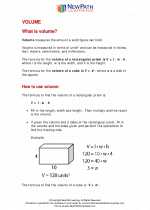Histograms Study Guide
A histogram is a graphical representation of the distribution of numerical data. It consists of a series of bars, where each bar represents a range of values and the height of the bar corresponds to the frequency or relative frequency of the values within that range.
Key Concepts
- Frequency: The number of data points within a particular range.
- Relative Frequency: The proportion of data points within a particular range, calculated by dividing the frequency by the total number of data points.
- Bins: The ranges into which the data is divided for the histogram.
- Bars: The vertical rectangles that represent the frequency or relative frequency of the data within each bin.
Creating a Histogram
- Identify the range of the data and determine the bins (intervals) to use.
- Count the frequency of data points within each bin.
- Calculate the relative frequency by dividing the frequency in each bin by the total number of data points.
- Draw a horizontal axis and vertical axis to represent the bins and the frequency/relative frequency, respectively.
- Draw a bar for each bin, with the height of the bar corresponding to the frequency or relative frequency.
Interpreting a Histogram
When interpreting a histogram, pay attention to the shape, center, and spread of the data. Look for any patterns or outliers that may be present.
Example
Suppose we have the following data on the number of hours students spend studying per week:
| Hours Studied | 0-5 | 6-10 | 11-15 | 16-20 |
|---|---|---|---|---|
| Number of Students | 8 | 12 | 5 | 3 |
Using this data, we can create a histogram to visualize the distribution of study hours among the students.
Practice Questions
- What is the purpose of a histogram?
- How do you calculate the relative frequency for a histogram?
- What should you look for when interpreting a histogram?
For more practice and understanding, try creating histograms for different sets of data and interpreting the results.
[Histograms] Related Worksheets and Study Guides:
.◂Math Worksheets and Study Guides Sixth Grade. Volume
The resources above cover the following skills:
Geometry (NCTM)
Use visualization, spatial reasoning, and geometric modeling to solve problems.
Use geometric models to represent and explain numerical and algebraic relationships.
Measurement (NCTM)
Apply appropriate techniques, tools, and formulas to determine measurements.
Select and apply techniques and tools to accurately find length, area, volume, and angle measures to appropriate levels of precision.
Develop strategies to determine the surface area and volume of selected prisms, pyramids, and cylinders.
Connections to the Grade 6 Focal Points (NCTM)
Measurement and Geometry: Problems that involve areas and volumes, calling on students to find areas or volumes from lengths or to find lengths from volumes or areas and lengths, are especially appropriate. These problems extend the students' work in grade 5 on area and volume and provide a context for applying new work with equations.




